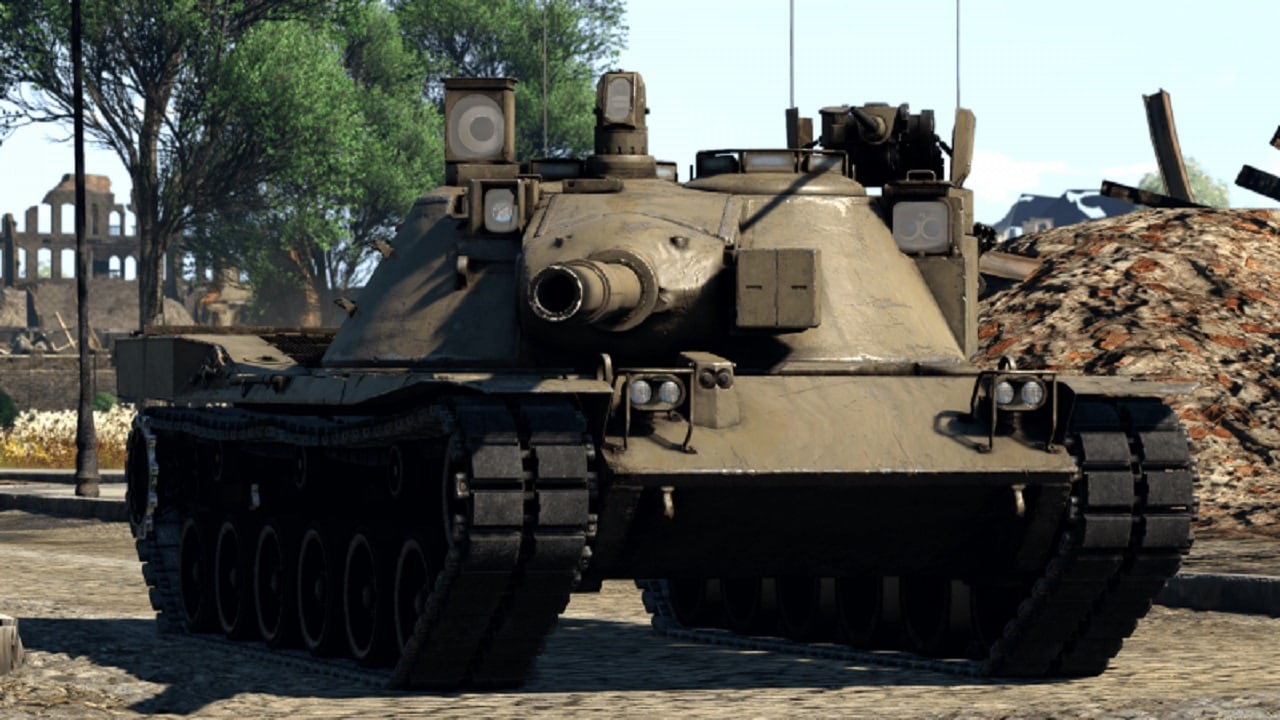Key Points and Summary – The MBT-70 was a bold U.S.–West German effort in the 1960s to build a revolutionary main battle tank with advanced armor, a 152mm gun/launcher, and futuristic suspension and crew layout.
-But incompatible visions, clashing requirements, technical disputes, and runaway costs doomed the joint program.

MBT-70 Tank. Image Credit: Creative Commons.

MBT-70 Tank.
-Germany walked away in 1969; the U.S. killed its follow-on XM803 in 1971. Yet the project’s “failure” seeded the breakthrough designs that followed.
-Lessons learned on armor, fire control, and mobility fed directly into the M1 Abrams and Leopard 2—tanks that would define Western armored warfare for decades.
MBT-70: The ‘Failed’ Super Tank That Gave Us the Abrams and Leopard 2
The MBT-70 project was an ambitious joint venture between the United States and West Germany during the 1960s, aimed at developing a revolutionary main battle tank to counter the Soviet Union’s armored threats during the Cold War.
The project sought to combine the technological prowess of both nations to create a tank that would surpass existing models like the American M60 Patton and the German Leopard I.
However, the project ultimately failed due to the lack of a cohesive shared vision.
MBT-70: Project Overview
The MBT-70, known as the KPz 70 in Germany, was designed to incorporate several advanced features that were groundbreaking for its time.
These included a hydropneumatic suspension system that allowed the tank to “kneel” for a lower profile, advanced spaced armor for enhanced protection, and a 152mm XM150 gun/launcher capable of firing both conventional rounds and the MGM-51 Shillelagh anti-tank missile.
The tank also featured a unique design where the entire crew was housed in the turret, intended to improve crew survivability.
While these ideas seem antiquated today, in the 60s most of this technology was considered cutting-edge.
Lack of Shared Vision
Despite these innovations, the MBT-70 project faced numerous challenges that ultimately led to its failure. One of the primary issues was the lack of effective communication and coordination between the American and West German teams.
The two countries had different requirements and priorities for the tank, which were not adequately reconciled.
For instance, the U.S. Army preferred a tank with a missile system for long-range engagements, while the German Bundeswehr prioritized a high-velocity gun.
The Germans also zealously guarded their trade secrets, further complicating communication and coordination between the two nations.

MBT-70. Artist Rendering. Image Credit: Creative Commons.
Additionally, there were significant technical and logistical challenges. The project suffered from disagreements over design specifications, such as whether to use metric or imperial measurements, and the choice of engine types.
These disagreements led to delays and increased costs. The initial budget of $80 million ballooned to over $303 million. The tank also became too heavy, exceeding the weight limits for German infrastructure, which further complicated its deployment.
By the late 1960s, the escalating costs and unresolved technical issues led West Germany to withdraw from the project in 1969. The United States continued development under the designation XM803 but eventually canceled the program in 1971 due to similar issues.
Failure Leads to Innovation
Although the MBT-70 project was ultimately deemed a failure, it had significant ripple effects for future tank development.
The technological innovations and lessons learned from the MBT-70 were not lost. Both the United States and West Germany used the experience gained to develop and perfect their own future tanks.
In the United States, the MBT-70 project paved the way for the development of the M1 Abrams, which incorporated many of the advanced technologies initially envisioned for the MBT-70, such as improved armor and advanced fire control systems.
The M1 Abrams became one of the most successful and widely used main battle tanks in the world.
Similarly, West Germany used the insights from the MBT-70 project to develop the Leopard 2, which also became a highly successful main battle tank and remains in service with numerous countries worldwide.
While the MBT-70 project ultimately ended in failure, it played a crucial role in advancing Western tank technology and shaping the development of future main battle tanks.
While the tank employed cutting-edge technology for the time, in the long run, its successors, the Abrams and the Leopard 2, shaped Western tank manufacturing into what it is today. For that, we owe the MBT-70 our gratitude.
About the Author: Isaac Seitz
Isaac Seitz, a Defense Columnist, graduated from Patrick Henry College’s Strategic Intelligence and National Security program. He has also studied Russian at Middlebury Language Schools and has worked as an intelligence Analyst in the private sector.

